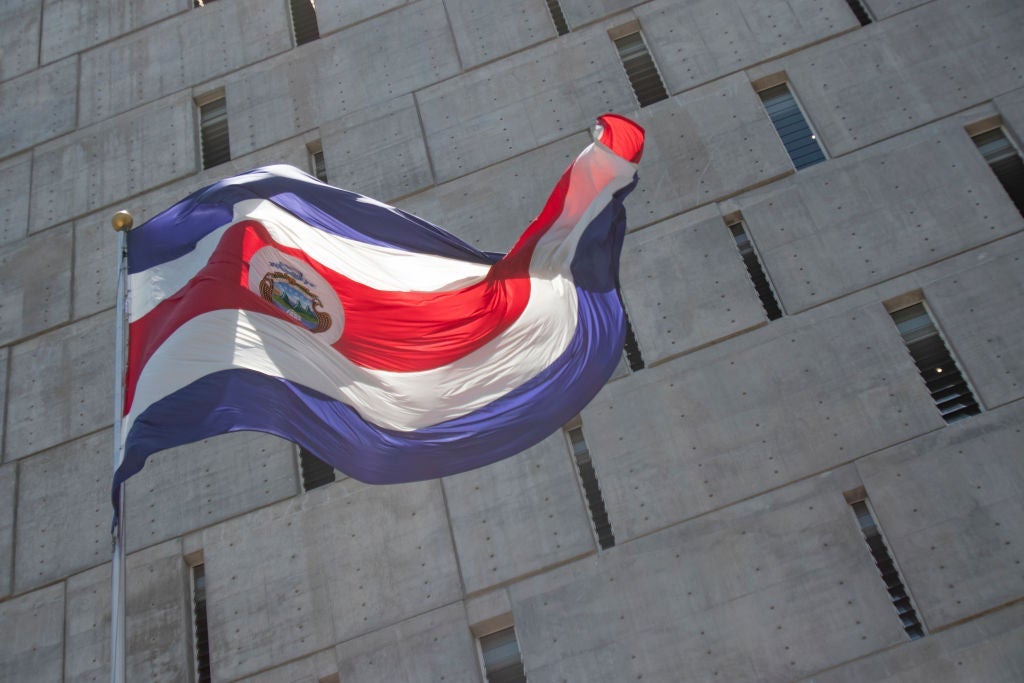
Costa Rica is the leading country in Investment Monitor’s 2022 Inward FDI Performance Index, which measures a country’s inward investment levels against its gross domestic product (GDP) using our FDI Projects Database which tracks greenfield projects. This means that Costa Rica, with a score of 13.4, received more than 13 times its fair share of inward greenfield foreign direct investment (FDI) compared with what could be expected given its level of GDP. In that regard, Costa Rica is punching well above its weight in FDI terms.
Costa Rica specialises in attracting companies from the technology, business and professional services and life sciences industries. According to our FDI Projects database, in 2021, almost two-thirds (63%) of Costa Rica’s total inbound greenfield FDI came from these three sectors. Although the country continues to be a key outsourcing hub, investors are seeing its potential for manufacturing and R&D operations, particularly relating to life sciences and tech.
US technology-enabling business service company Concentrix announced it was creating 1,000 new jobs in Costa Rica in the first half of 2021. Other large investments included Intel announcing a new $250m expansion of its facility in San Antonio. Terumo BCT announced it would open a new medical device product manufacturing facility in Cartago, creating 700 jobs, while Moog, a US-based medical devices company, announced plans to expand its research and development (R&D) department at Coyol Free Zone in Alajuela. The company will create 600 new jobs for software development engineers.
The largest economies are underperforming
China and the US are ranked towards the bottom of the Inward FDI Performance ranking. China ranks 96th (last), while the US ranks 94th. Although the US is the largest FDI destination market it is a larger contributor to the world economy. So, while the US receives 9.3% of global FDI, it accounts for almost one-quarter (24.6%) of the world’s GDP. The US is also the largest source market for FDI. It creates almost three outbound projects for every one inbound project received.
China's performance in the index may come as a shock. However, China’s inbound receipt of greenfield FDI has been in decline for several years. Investor concerns over the US-China decoupling and rising costs in China have caused investors to look at Asian neighbours. While this has been happening, China has become a much more prevalent economic powerhouse. In 2000, China accounted for only 3.5% of world GDP. In 2021, this had risen to 18.1%. The International Monetary Fund estimates that China will account for 21.4% of global GDP by 2027.
The UAE is the top performing major FDI player
The United Arab Emirates is the world’s seventh-largest economy by receipt of inward FDI projects. In FDI terms, it massively overperforms, especially when compared with the ten largest world economies. The UAE scores 8.2 in the index, ranking third overall behind Costa Rica and North Macedonia. It is also top of the list of countries to receive more than 175 projects in 2021. The UAE is punching above its weight, bringing in eight times the number of greenfield projects that would be expected given its volume of GDP.
The majority of investments into the UAE are in Dubai and Abu Dhabi. Most investments are in the software and computer services and business and professional services sectors. In 2021, the UAE received investments from companies across 70 countries. The US, UK and India are the primary source markets for investments into the UAE.
Regional spotlight: Asia-Pacific
Singapore is the leading country within Asia-Pacific, ranking 12th in the index with a score of 4.9. New Zealand and Cambodia are also placed within the top 25, scoring 3.31 and 3.26, respectively. Ten of the 18 Asia-Pacific countries analysed in the index have a score above one. China, Bangladesh and Japan are the lowest-performing nations overall.
Regional spotlight: CEE and CIS
North Macedonia ranks first within the central and eastern Europe and Commonwealth of Independent States region, and second in the overall index. The country scores 11.5, just slightly behind Costa Rica. A total of 21 countries in the region were analysed and only three – Russia, Kazakhstan and Slovakia – have an index score below one. It is the leading region for the index, with Croatia, Serbia and Estonia ranking a respective fourth, fifth and sixth in the overall index. Of the overall top 20 countries, 11 are located within the region.
Methodology
The Inward FDI Performance Index examines the number of inbound FDI projects into each country as a proportion of the world total. The result is then divided by the country’s GDP as a proportion of world GDP. If the resulting value is a number greater than one, that means the country is receiving a higher proportion of inbound greenfield FDI than one may expect given its economic contributions to the global economy. A score of less than one means the country is a smaller player in FDI terms compared with its levels of GDP. The FDI Project information is sourced from our FDI Projects database and GDP data is sourced from the International Monetary Fund.







